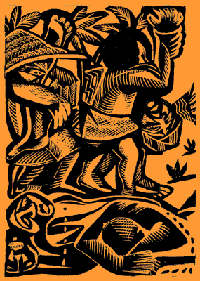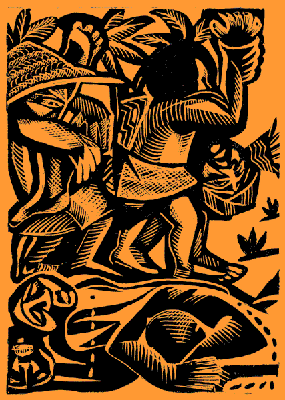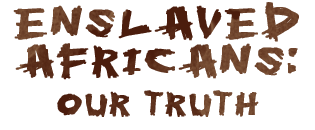
Okechukwu - Capture
Everything is so clear in my head yet so confusing. There was shouting and firelight in the darkness, then the smell of burning and my people screaming. Outside our home I saw our enemies. They had flaming torches and were shouting. There were so many of them. The smoke, the fire and the noise - I was confused.
I felt a blow to my head then hands grabbing me. My mother screamed then fell silent with the explosion that seemed to come from one of our enemies. Then I went to sleep. I wish I had stayed asleep.
When I woke I was far from my home. I was very scared. I thought that I was to be a slave of our enemies. There were other men from my village with me but their looks told me that things were very bad for us. They were right.
Read about capture for Kwame, Oyeladun and Kofi.
People are carried away.

Enemies
It was not unusual for Africans to be captured in battle and taken into slavery by other tribes. The Songhai Empire used war captives as soldiers and farmers. However, once white traders began to pay for African captives many more wars were waged with the purpose of kidnapping people like Okechukwu.
Explosion
White traders offered guns, ammunition and other goods in exchange for captives. Weapons made some groups stronger than others, and altered the balance of power in West Africa.
Slave
Slavery existed in Africa before the arrival of white people. Slaves were servants, farmers and soldiers. However, there were differences between African and American slavery:
- African states did not depend on slave labour. American plantations could not have grown as they did without slavery.
- Chattel slavery was practiced in the Americas but not in Africa. A chattel slave is a person owned and treated as a piece of property. He or she can be bought and sold, has no legal rights and can be forced to work under any conditions without payment.
- African slavery had nothing to do with race and it was often understood that the period of slavery would be temporary. White slave owners developed racist laws and encouraged racist attitudes to justify enslaving Africans.
Men
Strong, young men were the main targets of white slave traders. Some people estimate that around two thirds of all Africans taken into slavery were male. This had a great social and economic impact on those left behind, and women were often left to fill the gaps left by the missing men.


